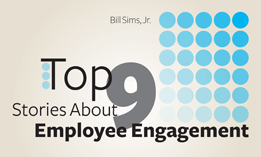When can we fire our stupid workers?
“We are trying to reduce the stupid accidents that occur because employees are in a hurry, or they don’t follow the safety standards.”
“Every time we have an accident, I get an email from my president asking if we can fire the injured employee. In their book, it’s always the employee’s fault…”
“I have the dumbest employees in the world! One of my guys reached into a conveyor belt without shutting it down . . . a deliberate violation of our safety rules! He almost got his arm ripped off. Boy was he dumb!”
These are just a handful of the candid comments that a few safety people have made when I chat with them. The last one came from an ASSE meeting where the safety manager lamented people who are so “stupid” that they break obvious safety rules.
I told that safety director that his people aren’t dumb. And while the worker with the missing arm won’t make the mistake again of reaching into the conveyor belt, others will make that mistake before long.
“Why do you say that?” he asked me.
Because your system has created very powerful reasons for people to break safety rules.
Any time we do something, we are getting positively reinforced for it someway, somehow.
I eat a donut—it tastes great, so I eat another one.
I press the gas pedal, my car goes faster, and I get to where I need to be sooner.
“When your employee violated your safety rules and unjammed the conveyor without locking it out, he was getting something positive back. He was being positively reinforced for that behavior . . . can you tell me how?” I asked the safety director.
“Hmmm . . . well, he was saving time.”
And with this Aha! Moment, together, we began to unravel the behavior of the “stupid” worker.
You see, by saving time, the worker got more work done. And when he got more work done, he made more money. And his supervisor got a production bonus too. So guess who bought the beer that night? Now that’s positive reinforcement.
Sad to say, without knowing it, the managers had created positive reinforcement for breaking safety rules. They were to blame for the injured worker.
These unknown positive consequences continue to make people do things that are “crazy,” for example:
Some people diagnosed with lung cancer keep smoking . . . the positive and immediate consequences of the nicotine reinforce their “stupid” behavior.
Some people drive cars while reading email on their computers.
Most people who are injured are in fact not stupid or crazy. They are simply reacting to the world they live in and performing their work in a way that will lead to a maximum amount of positive reinforcement with a belief that they have almost no chance of experiencing a negative reinforcer or accident. This is human nature.
The challenge for safety people, and in fact for all managers who need to achieve behavior change is to create more positive consequences for the desired safety behaviors and remove the positive consequences for the wrong behaviors.
But how do we do this? Is it another picnic? A Company party? A gift card for everyone because the team met its goals?
If only it were that simple.
NOT ANOTHER PICNIC: ONE SIZE DOES NOT FIT ALL…
“We do great job at employee recognition” said the Human Resource Manager of a large hospital.
“That’s good to know” I said. “How do you go about recognizing great performers?”
“Well, we do a quarterly picnic and select the Employee of the Quarter for each department. Then there’s our Christmas party where we choose an Employee of the Year,” she replied.
“How is that working for you? Have you positively impacted your employee and patient satisfaction numbers? Can you measure and quantify your employee engagement? Did your system really change anybody’s behavior?”
She stared back at me in silence. I figured this meeting was over.
Oops, I think I did it again. (You’re not the only one Britney.) I felt kind of bad for being too direct. It looked like my honesty had gotten me in trouble.
In my next column we’ll explore one-size-fits-all recognition and why it does more harm than good.
Stay tuned!
You can follow any responses to this entry through the RSS 2.0 feed. You can leave a response, or trackback from your own site.
